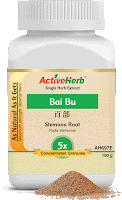The debate regarding herbal versus synthetic medicine has led to the disrespect of traditional wisdom, and fear of modern science. My family believes that Chinese Ginseng will cure any ailment. My initial reaction is often to disregard any medicine recommended on the basis of traditional wisdom, but I've had to remind myself that the scientific method does not end with a hypothesis. Researchers Xiachang Wang, Lihong Hu and colleagues investigated a different traditional Chinese medicinal herb called the Stemona Root (Stemona sessilifolia) that, for hundreds of years, has been used as a treatment for parasitic infections.
 |
| Figure 1: Stemona Root, sold at $16.98 |
 |
| Figure 2: Pyrrole formula |
The ten new compounds found within the endophyte showed strong toxicity in aphids and moderate toxicity in spider mites, more lethal as a combination than any one compound would be alone. It is proven then that within the nonscientific realm of Traditional Chinese Medicine a nugget of wisdom is present. Research such as this may provide a point of connection that may show consumers that science removes the barrier between the natural and the synthetic. Yes, the Stemona Root did contain compounds that remedy parasitic infections, and now we can research a way to make the use of those compounds more practical. Using technology to investigate the efficacy of herbal treatments will lead to new discoveries and lessen the fear that a consumer feels when they do not understand how a product was developed.
Sources:
https://www.sciencedaily.com/releases/2020/01/200129091449.htm
https://www.sciencedirect.com/topics/chemistry/agrochemical
https://pubchem.ncbi.nlm.nih.gov/compound/Pyrrole
No comments:
Post a Comment